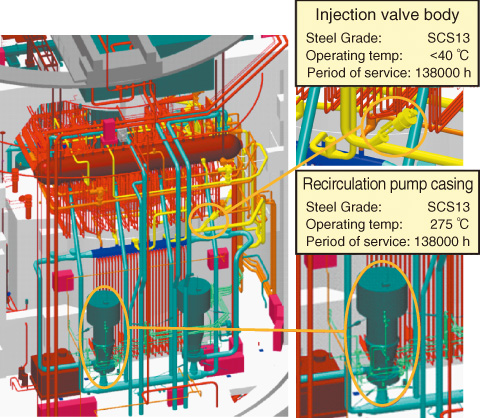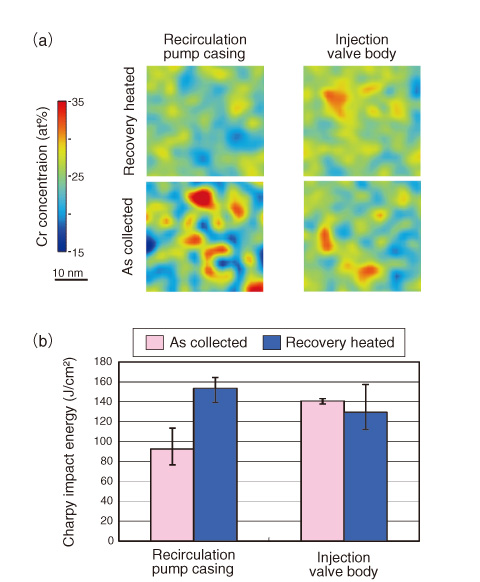
Fig.6-9 Sampling point schematics and service condition of test specimens collected from “FUGEN” reactor

Fig.6-10 Results of analyses of samples collected from “FUGEN” reactor
Cast stainless steels are extensively used in light water reactors to fabricate valve bodies, pump casings, and primary coolant piping. Previous studies have shown that thermal aging around 300 °C causes embrittlement. Predictions of the degree of loss in toughness suffered during extended reactor service life would be valuable for assessing the reliability of cast stainless steel reactor components. Therefore, some models for predicting changes in the mechanical properties because of thermal aging have been developed. However, to maintain the toughness of the components in service within a reasonable time period, the aging process in the test material must be accelerated at high aging temperatures. Thus, it is very important to examine the thermal embrittlement mechanism using data obtained from materials that have aged on site for a long period.
A program is currently underway for a decommissioning plan that considers the progress and dismantling of the “FUGEN” reactor. The reactor contains valuable structural materials that have been used for 25 years. In this study, the degree of toughness and the microstructural characterization of cast stainless steel components dismantled from the “FUGEN” reactor were investigated to determine the long-term thermal aging effect at low temperatures (Fig.6-9). We studied the microstructural changes due to thermal aging using the three-dimensional atom probe (3DAP) technique, which is suitable for nanometer-scale analysis of the materials. The analysis of the sample material, which was collected from the “FUGEN” reactor, under thermal aging at 275 °C shows that the initial homogeneous distribution of the Cr concentration becomes modulated as the structure progresses into spinodal decomposition (Fig.6-10(a)). This microstructural change is probably related to hardening, and it causes the thermal aging embrittlement. The results of Charpy impact tests ensure the reliability of the injection valve body. On the other hand, the results from the recirculation pump casing show early signs of an ongoing thermal aging effect (Fig.6-10(b)). We are planning to investigate the underlying mechanism of the embrittlement process to validate and improve the accuracy of the prediction model by using the valuable material data obtained from the “FUGEN” reactor.
The present study was sponsored by the Japan Nuclear Energy Safety Organization (JNES).